Major League Baseball Stadiums and Their Dimensions
Baseball parks come in all different styles and shapes. Especially since teams started to ditch the cookie cutter multi-use stadiums built in 60s and 70s for more intimate baseball only ballparks designed in retro-classic and retro-modern styles.
Learn more about all 30 current major league ballparks below. And, as an added bonus, we also have the lowdown on five classic parks of yore.
Angel Stadium of Anaheim
Former names: Anaheim Stadium; Edison International Field of Anaheim
Baseball capacity: 45,483
Turf: grass
Where is it located: Anaheim, California
Who plays there: Los Angeles Angels of Anaheim
When was it built: 1966
Cost in 2013 dollars: 170 million
Dimensions: left 330; center 400; right 330
Distinguishing characteristics: Fourth oldest ballpark in baseball. One of the last remaining Multi-use stadiums. Good beverages at the Diamond Club.
Notable games: 2002 World Series; 1967, 1989 and 2010 All Star Ggames.
Other facts: Famous Queen Elizabeth/Reggie Jackson scene in ‘Naked Gun’ shot on site.
AT&T Park
Former names: Pacific Bell Park: SBC Park
Baseball capacity: 41,915
Turf: Grass
Where is it located: San Francisco, California
Who plays there: San Francisco Giants
When was it built: 2000
Cost in 2013 dollars: 476 million
Dimensions: left 339; center 404; right 309
Distinguishing characteristics: McCovey’s Cove, a body of water just beyond right field which is sometimes reached by home run.
Notable games: 2010 and 2012 World Series; 2013 World Baseball Classic Final
Other facts: Although built for baseball, AT&T park hosts college football games and exhibition soccer games.
Busch Stadium
Former names: Since it replaced another Busch Stadium it is sometimes called “The New Busch Stadium.”
Baseball capacity: 43,975
Turf: Grass
Where is it located: St. Louis, Missouri
Who plays there: St. Louis Cardinals
When was it built: 2006
Cost in 2013 dollars: 416 million
Dimensions: left 336; center 400 feet; right 335
Distinguishing characteristics: Centerfield view of iconic St Louis Arch.
Notable Games: 2006 and 2011 World Series; 2009 All Star Game.
Other facts: Actually the third stadium successive baseball stadium in St. Louis called Busch Stadium. Whereas the first two Busch Stadiums were named after team owner and beer magnate Gussie Busch, the Busch family no longer owns the St. Louis Cardinals and Anheuser Busch had to purchase the naming rights on the latest stadium.
Chase Field
Former names: Bank One Ballpark
Baseball capacity: 48,633
Turf: Grass
Where is it located: Phoenix, Arizona
Who plays there: Arizona Diamondbacks
When was it built: 1998
Cost in 2013 dollars: 499 million
Dimensions: 330 Left Field; 407 Center Field; 334 Left Field
Distinguishing characteristics: First retractable roof stadium in the United States. Pool area beyond the right center field wall.
Notable games: 2001 World Series; 2011 All Star Game.
Other facts: Roof is open or closed depending on the temperature, and if closed three hours before game time the stadium’s HVAC system can drop the temperature 30 degrees.
Citi Field
Former names: None
Baseball capacity: 41,922
Turf: Grass
Where is it located: Queens, New York
Who plays there: New York Mets
When was it built: 2009
Cost in 2013 dollars: 963 million
Dimensions: Left 335; Center 408 feet; Right 334
Distinguishing characteristics: Only stadium in Major League Baseball to feature orange foul poles (orange is the Mets’ color) instead of yellow.
Notable Games: 2013 All Star Game
Other facts: Citi Field was considered an extreme pitcher’s park for its first three years of existence, but before the 2012 season Mets’ management made modifications including moving in the wall in right center from 415 feet to 390 feet and removing a field extending nook in left.
Citizens Bank Park
Former names: None
Baseball capacity: 43,651
Turf: Grass
Where is it located: Philadelphia, Pennsylvania
Who plays there: Philadelphia Phillies
When was it built: 2004
Cost in 2013 dollars: 557 million
Dimensions: left 329;center 401 feet; right 330
Distinguishing characteristics: Tall angled wall in left center field that extends out to 409 feet. Neon Liberty Bell over right field.
Notable games: 2008 World Series.
Other facts: First ever “green” Major League Baseball stadium. 257 game sellout streak between 2009 and 2012. Often called “The Bank.
Comerica Park
Former names: none
Baseball capacity: 41,255
Turf: Grass
Where is it located: Detroit, Michigan
Who plays there: Detroit Tigers
When was it built: 2000
Cost in 2013 dollars: 400 million
Dimensions: left 345; 420 feet center height 330.
Distinguishing characteristics: Deep dimensions. View of downtown Detroit.
Notable games: 2006 and 2012 World Series; 2005 All Star Game
Other facts: Often referred to as “Comerica National Park” for its deep dimensions. Left center was moved in from 395 feet to 370 feet before the 2003 season.
Coors Field
Former names: none
Baseball capacity: 50,480
Turf: Grass
Where is it located: Denver, Colorado
Who plays there: Colorado Rockies
When was it built: 1995
Cost in 2013 dollars: 452 million
Dimensions: left 347; center 415 feet; right 350
Distinguishing characteristics: Thin air causes ball to travel further off of the bat. Fountain beyond center field that shoots water in the air when the Rockies score a run or win a game.
Notable Games: 2005 World Series; 1998 All-Star Game
Other facts: Dinosaur bones were found during the construction of Coors Field, including a thousand pound triceratops skull. This is why the Rockies’ mascot is a dinosaur.
Dodger Stadium
Former names: Chavez Ravine Stadium
Baseball capacity: 53,275
Turf: Grass
Where is it located: Los Angeles, California
Who plays there: Los Angeles Dodgers
When was it built: 1962
Cost in 2013 dollars:175 million
Dimensions: 330 left; 400 feet center; 330 right,
Distinguishing characteristics: Oldest stadium in the National League. Wavy roof atop outfield pavilion.
Notable Games: 1963, 1965, 1966, 1974, 1977, 1978, 1981 and 1988 World Series; 1984 Olympic baseball; 1980 All Star Game
Other facts: Was built to be earthquake resistant and has survived two major quakes. Largest baseball specific stadium in the United States by capacity.
Fenway Park
Former names: none
Baseball capacity: 37,499
Turf: Grass
Where is it located: Boston, Massachusetts
Who plays there: Boston Red Sox
When was it built: 1912
Cost in 2013 dollars: 15.5 million
Dimensions: 310 left; 389 feet center; 302 right,
Distinguishing characteristics: 37 foot Green Monster in right. Pesky’s Pole in left. 420 foot “triangle” in right center.
Notable games: 1912, 1915, 1916, 1918, 1946, 1967, 1975, 1986, 2004, 2007 World Series. 1999 All Star game
Other facts: On the National Register of Historic Places. 456 game sellout streak between 2003 and 2012.
Great American Ball Park
Former names: None
Baseball capacity: 42,319
Turf: Grass
Where is it located: Cincinnati, Ohio
Who plays there: Cincinnati Reds
When was it built: 2003
Cost in 2013 dollars: 362 million
Dimensions: 329 left; 404 feet center; 325 right
Distinguishing characteristics: The 35 foot “gap”, a break in the stands between home plate in third bases which allows views inside the stadium from the city’s skyline and vice versa.
Notable games: 2015 All Star game.
Other facts: Features 47 bathrooms. Although it’s name sounds generally patriotic, it actually refers to the Great American Insurance Group, who bought the park’s naming rights.
Kauffman Stadium
Former names: Royals Stadium
Baseball capacity: 37,903
Turf: Grass
Where is it located: Kansas City, Missouri
Who plays there: Kansas City Royals
When was it built: 1973
Cost in 2013 dollars: 362 million.
Dimensions: 330 left; 410 feet center; 330 right
Distinguishing characteristics: 322 foot fountain (largest privately funded water work in the United States) behind right field.
Notable games: 1980 and 1985 World Series; 1973 and 2012 All-Star Game
Other facts: Although it was built in the era of multi-use cookie cutter stadiums and gets some of its design cues from that style, Kauffman Stadium is a baseball-only facility.
Marlins Park
Former names: None
Baseball capacity: 36,742
Turf: Grass
Where is it located: Miami, Florida
Who plays there: Miami Marlins
When was it built: 2012
Cost in 2013 dollars: 634 million
Dimensions: 344 left; 416 feet center; 335 right
Distinguishing characteristics: Retractable roof. Aquarium backstop. Elaborate Miami-themed home run sculpture in center field.
Notable games: None
Other facts: Modern design makes it the first non-retro ballpark since Camden Yards started the retro trend in 2012
Miller Park
Former names: None
Baseball capacity: 41,900
Turf: Grass
Where is it located: Milwaukee, Wisconsin
Who plays there: Milwaukee Brewers
When was it built: 2001
Cost in 2013 dollars: 519 million
Dimensions: 344 left; 400 feet center; 34 right
Distinguishing characteristics: Retractable Roof. Slide from mascot Bernie Brewer’s dugout above left field into splash zone. Sixth inning sausage race.
Notable Games: 2002 All Star Game
Other facts: A Sport’s Illustrated fan survey found that Miller Park was the best value in Major League Baseball per dollar spent.
Minute Maid Park
Former names: Enron Field; Astros Field
Baseball capacity: 42,060
Turf: Grass
Where is it located: Houston, Texas
Who plays there: Houston Astros
When was it built: 2000
Cost in 2013 dollars: 333 million.
Dimensions: left: 315; center 436 feet; right 326
Distinguishing characteristics: Retractable roof. Hill in deep center field with an in-play flag pole. Railroad train feature on the left side of the stadium.
Notable Games: 2005 World Series; 2004 All Star Game
Other facts: Nicknamed “The Juice Box.” It’s original name of Enron Field became a punchline when the Houston-based energy trading company famously imploded.
Nationals Park
Former names: None
Baseball capacity: 41,418
Turf: Grass
Where is it located: Washington, D.C.
Who plays there: Washington Nationals
When was it built: 2008
Cost in 2013 dollars: 793 million
Dimensions: 337 left; 402 feet center; 335 right
Distinguishing characteristics: The Washington Monument and The Capital are visible from certain parts of the stadium. Sixth inning Presidents’ Race
Notable Games: None
Other facts: Free valet service for fans who drive their bikes to the game.
O.co Coliseum
Former names: Oakland–Alameda County Coliseum; Networks Associates Coliseum; McAfee Coliseum; Overstock.com Coliseum.
Baseball capacity: 35,067
Turf: Grass
Where is it located: Oakland, California
Who plays there: Oakland Athletics
When was it built: 1966
Cost in 2013 dollars: 180 million
Dimensions: 330 left; 400 feet center; 330 right
Distinguishing characteristics: Large amount of foul territory. Constant name changes.
Notable Games: 1972,1973,1974, 1988, 1989, 1990 World Series; 1987 All Star Game
Other facts: Only multi-use stadium left that services an MLB and NFL team. Baseball capacity has been reduced from 50,000 to 35,067 over the years.
Oriole Park at Camden Yards
Former names: none
Baseball capacity: 45,971
Turf: Grass
Where is it located: Baltimore, Maryland
Who plays there: Baltimore Orioles
When was it built: 1992
Cost in 2013 dollars: 180 million
Dimensions: 333 left; 400 feet center; 318 right
Distinguishing characteristics: B & 0 wearhouse in left field. Unique two-tiered bullpen design.
Notable games: 1993 All Star Game
Other facts: Camden Yards was the first of the retro-classic stadium designs that now dominant baseball. Retro-classic stadiums have retro interiors and exteriors. Often called “The Yard”
Petco Park
Former names: none
Baseball capacity: 42,524
Turf: Grass
Where is it located: San Diego, California
Who plays there: San Diego Padres
When was it built: 2004
Cost in 2013 dollars: 547 million
Dimensions: left 334; center 396 feet; right 322
Distinguishing characteristics: TaylorMade driver foul pole. Western Metal Supply Co. building incorporated into the stadium’s design.
Notable games: none
Other facts: Known as an extreme pitcher’s park, center field and the power alleys were taken in 11 feet and the some of the fence was lowered prior to the 2013 season. There have only been two rainouts in Petco history.
PNC Park
Former names: none
Baseball capacity: 38,362
Turf: Grass
Where is it located: Pittsburgh, Pennsylvania
Who plays there: Pittsburgh Pirates
When was it built: 2001
Cost in 2013 dollars: 280 million
Dimensions: 325 left; 410 feet center; 320 left
Distinguishing characteristics: View of 6th street bridge and downtown Pittsburgh.
Notable Games: 2006 All Star Game.
Other facts: ESPN rated PNC as the best ballpark in baseball. Ballpark expert Eric Enders has suggested it’s the best baseball stadium ever built.
Progressive Field
Former names: Jacobs Field
Baseball capacity: 43,545
Turf: Grass
Where is it located: Cleveland, Ohio
Who plays there: Cleveland Indians
When was it built: 1994
Cost in 2013 dollars: 262 million
Dimensions: 325 left; 410 feet center; 325 right.
Distinguishing characteristics: Home dugout along the third base line. Corkscrew shaped wind turbine in right field.
Notable Games: 1995 and 1997 World Series; 1997 All Star Game.
Other facts: Then record 455 game sellout streak between 1995 and 2001. Although the naming rights went to Progressive insurance in 2008, its still often called “The Jake,” which was its nickname when it was Jacobs Field.
Rangers Ballpark in Arlington
Former names: Ameriquest Field
Baseball capacity: 48,114
Turf: Grass
Where is it located: Arlington, Texas
Who plays there: Texas Rangers
When was it built: 1994
Cost in 2013 dollars: 296 million
Dimensions: 332 right; 400 feet center; 325 left.
Distinguishing characteristics: Greene’s Hill batter’s eye in center field. Roofed home run porch in right.
Notable Games: 2010 and 2011 World Series; 1995 All Star Game
Other facts: Known as an extreme hitter’s park, due to its short fences and humidity. Scenes from the movie “The Rookie” were shot there.
Rogers Centre
Former names: SkyDome
Baseball capacity: 49,282
Turf: AstroTurf
Where is it located: Toronto, Ontario, Canada
Who plays there: Toronto Blue Jays
When was it built: 1989
Cost in 2013 dollars: 913 million
Dimensions: left 328; 400 feet center; right 328
Distinguishing characteristics: First functional retractable roof stadium. Hotel with 70 rooms overlooking the field located inside the stadium
Notable games: 1992 and 1993 World Series; 1991 All Star Game.
Other facts: Last stadium built that regularly hosts baseball and football. Among its other uses include WWE matches, monster truck rallies, soccer games, auto shows and public speaking events.
Safeco Field
Former names: SAFECO Field
Baseball capacity: 47,476
Turf: Grass
Where is it located: Seattle, Washington
Who plays there: Seattle Mariners
When was it built: 1999
Cost in 2013 dollars: 713 million
Dimensions: 331 left; 405 feet center; 325 right
Distinguishing characteristics: Retractable roof which protects the field and most of the crowd, but doesn’t control the climate. (No need for that in the temperate Pacific Northwest.)
Notable games: 2001 All Star Game.
Other facts: Paul McCartney performed the stadium’s first public concert in June of 2013
Target Field
Former names: none
Baseball capacity: 39,021
Turf: Grass
Where is it located: Minneapolis, Minnesota
Who plays there: Minnesota Twins
When was it built: 2010
Cost in 2013 dollars: 574 million
Dimensions: 339 left; 411 feet center; 328 right
Distinguishing characteristics: View of downtown Minneapolis. Double decker bullpens.
Notable games: 2014 All Star Game
Other facts: ESPN The Magazine rated Target Field the best baseball experience in North America.
Tropicana Field
Former names: Florida Suncoast Dome; Thunderdome
Baseball capacity: 34,078
Turf: AstroTurf GameDay Grass
Where is it located: St. Petersburg, Florida
Who plays there: Tampa Bay Rays
When was it built: 1990
Cost in 2013 dollars: 228 million
Dimensions: left 315; center 404 feet; right 322.
Distinguishing characteristics: Only non-retractable roof dome in baseball. 10,000 gallon fish tank in right center field. One of two AstroTurf stadiums in baseball
Notable games: 2008 World Series
Other facts: Built to lure the Chicago White Sox to Florida, but didn’t get a baseball tennent until 1998, when baseball expended. Often called “The Trop.”
Turner Field
Former names: Centennial Olympic Stadium
Baseball capacity: 49,586
Turf: Grass
Where is it located: Atlanta, Georgia
Who plays there: Atlanta Braves
When was it built: 1996
Cost in 2013 dollars: 306 million
Dimensions: 335 left; 401 feet center; 300 right
Distinguishing characteristics: Fence from now-demolished Atlanta-Fulton stadium over which Hank Aaron hit his 715 home run still exists in Turner Field parking lot.
Notable Games: 1999 World Series; 2000 All Star Game
Other facts: While it was built to be the centerpiece for the 1996 Olympics, it was also designed in a way that it could be then transformed into a baseball-only facility..
U.S. Cellular Field
Former names: Comiskey Park
Baseball capacity: 40,615
Turf: Grass
Where is it located: Chicago White Sox
Who plays there: Chicago, Illinois
When was it built: 1991
Cost in 2013 dollars: 281 million
Dimensions: 330 left; 400 feet center; 335 right
Distinguishing characteristics: Very high upper deck. Extensive renovations over the past 12 years
Notable games: 2005 World Series: 2003 All Star game
Other facts: Last stadium built before the retro-classic trend. Many of its updates are to give it a less cookie-cutter look.
Wrigley Field
Former names: Weeghman Park; Cubs Park
Baseball capacity: 41,019
Turf: Grass
Where is it located: Chicago, Illinois
Who plays there: Chicago Cubs
When was it built: 1914
Cost in 2013 dollars:
Dimensions: left 355; center 400 feet; right 353
Distinguishing characteristics: Ivy walls. Low outfield bleachers allows game to viewed from townhouses and apartment across the Waveland Avenue.
Notable games: 1929, 1932, 1935, 1938 and 1945 World Series.
Other facts: Oldest stadium stadium in the National League. Nicknamed “The Friendly Confines.” First night game wasn’t until 1988,
Yankee Stadium
Former names: None
Baseball capacity: 50,291
Turf: grass
Where is it located: New York City (Bronx), New York
Who plays there: New York Yankees
When was it built: 2009
Cost in 2013 dollars: 1.61 billion
Dimensions: left 318; center 408; right 314
Distinguishing characteristics: Extreme home run park. Monument Park (which was transferred from to the old Yankee Stadium)
Notable games: 2009 World Series.
Other facts: Most expensive baseball stadium ever. Its dimensions closely follow those of the original Yankee Stadium.
Famous Former Ballparks
Comiskey Park
Former names: White Sox Park
Baseball capacity: 43,951
Turf: Grass/artificial turf
Where was it located: Chicago, Illinois
Who played there: Chicago White Sox; Chicago Cubs
When was it built: 1910
When was it demolished: 1991
Dimensions: left 347; Center 409; right 37
Distinguishing characteristics: Big dimensions (made smaller over the years.) First ballpark with “exploding” scoreboard
Notable games: 1917, 1918, 1919, 1953 World Series. 1933, 1950, 1983 All Star Game
Other facts: Oldest stadium in baseball before shutting down in 1990. Between 1969 and 1976 had a artificial turf infield and a grass outfield.
Polo Grounds
Former names: Brotherhood Park; Brush Stadium
Baseball capacity: 55.000
Turf: Grass
Where was it located: New York, New York
Who played there: New York Giants; New York Yankees; New York Mets
When was it built: 1890
When was it demolished: 1964
Dimensions: left 279; center 483; right 258
Distinguishing characteristics: Boxy shape; very short down the lines and with a massive center field fence nobody ever hit one over until it was brought in
Notable games: 1905, 1917, 1921, 1922, 1923, 1924, 1933, 1936, 1937, 1951, 1954 World Series. 1934 All Star Game.
Other facts: Was originally for polo. New York football Giants also played there for 31 years.
Ebbets Field
Former names: none
Baseball capacity: 35,000
Turf: grass
Where was it located: Brooklyn, New York
Who played there: Brooklyn Dodgers
When was it built: 1913
When was it demolished: 1960
Dimensions: Left 348; Center 383; right 297
Distinguishing characteristics: Tiny dimensions after redesign in 1932. Ballpark was built on a sloping piece of ground
Notable games: 194, 1947, 1949, 1952, 1953, 1955, 1956 World Series; 1949 All Star game.
Other facts: Also a premier venue for soccer exhibitions. Now a housing development called The Ebbets Field Apartments.
Connie Mack Stadium
Former names: Shibe Park
Baseball capacity: 33,608
Turf: grass
Where was it located: Philadelphia, Pennsylvania
Who played there: Philadelphia Athletics; Philadelphia Phillies
When was it built: 1909
When was it demolished: 1970
Dimensions: 334 left; 447 center; 329 right
Distinguishing characteristics: Famous 50 foot “Spite Fence” built by Connie Mack in 1935 to prevent local residents from watching the games for free from their rooftops.
Notable games: 1910, 1911, 1912, 1913, 1929, 1930, 1931, 1950 World Series; 1943 and 1952 All Star Games
Other facts: The Phillies and the A’s shared the park for 17 years, making scheduling very difficult. Connie Mack Stadium’s rooftop bleachers were inspiration for Citizen’s Bank Park Design.
Griffin Stadium
Former names: National Park; Boundary Field
Baseball capacity: 32,000
Turf: Grass
Where was it located: Washington DC
Who played there: Washington Senators
When was it built: 1911
When was it demolished: 1964
Dimensions: 388 left; 421 center; 344 right
Distinguishing characteristics: Unusual right-angled jut in right center field to avoid tree.
Notable games: 1924, 1925, 1933 World Series; 1937 All Star game
Other facts: Nine straight Presidents from William Taft to John F. Kennedy threw out a first pitch and Griffin Stadium. Howard University Hospital occupies its former site.
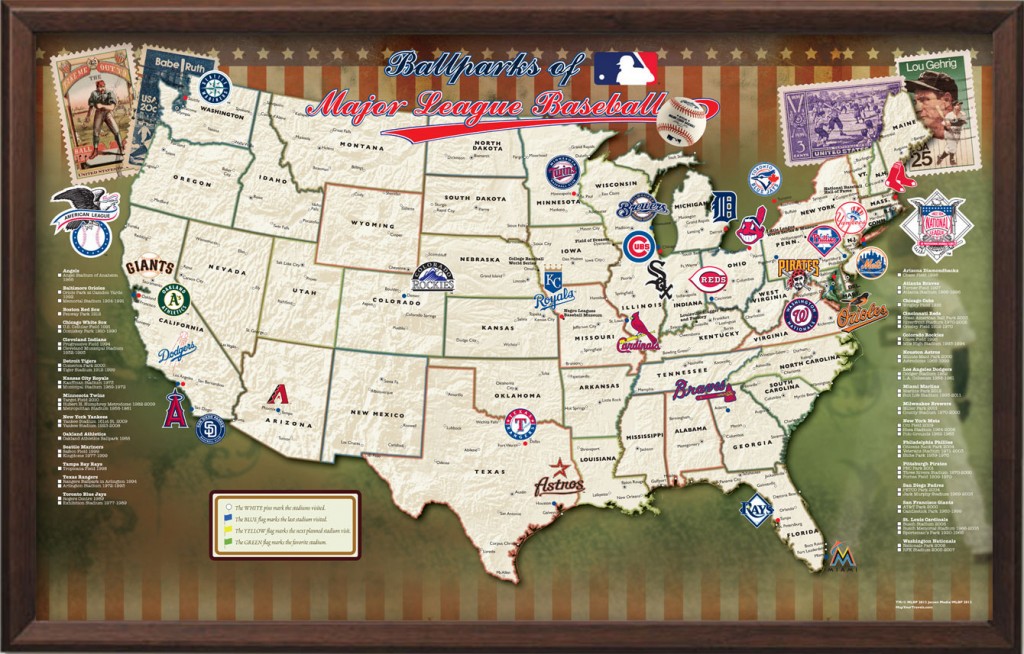
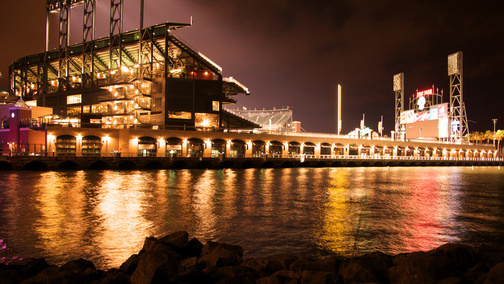
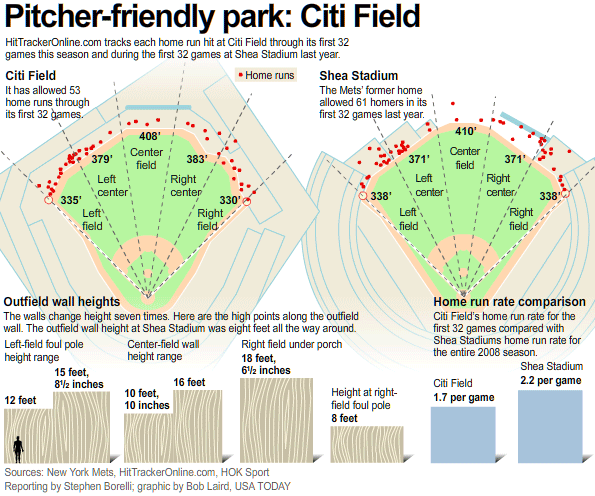
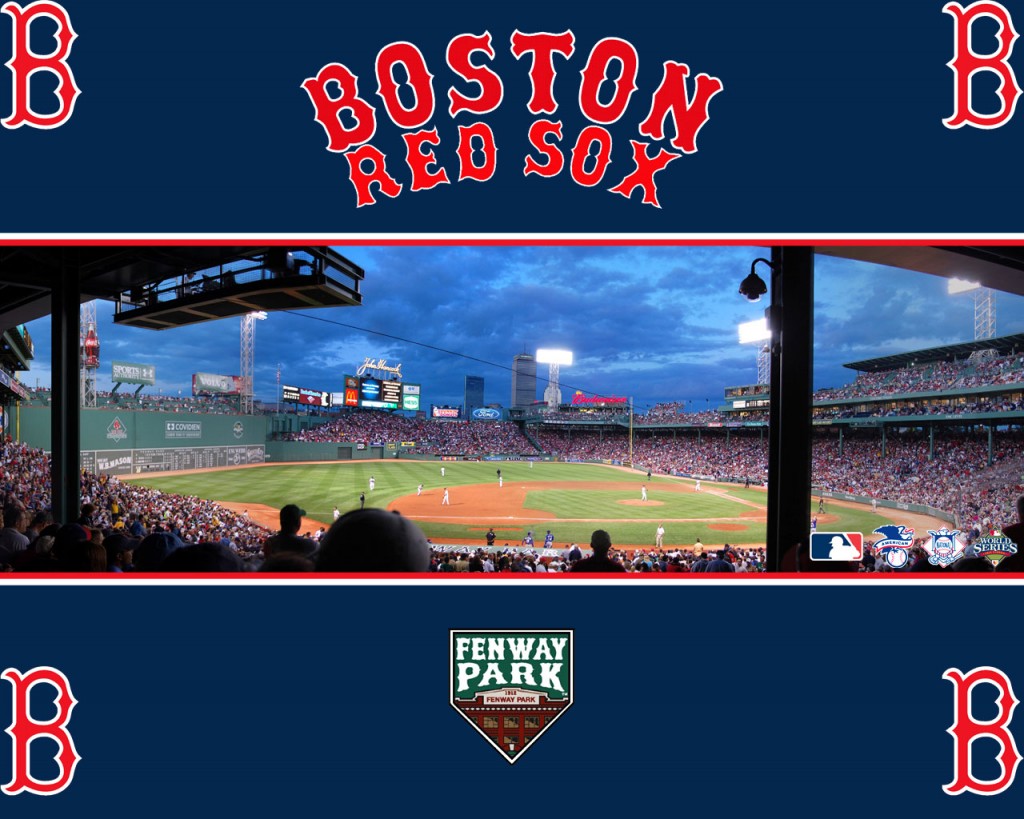

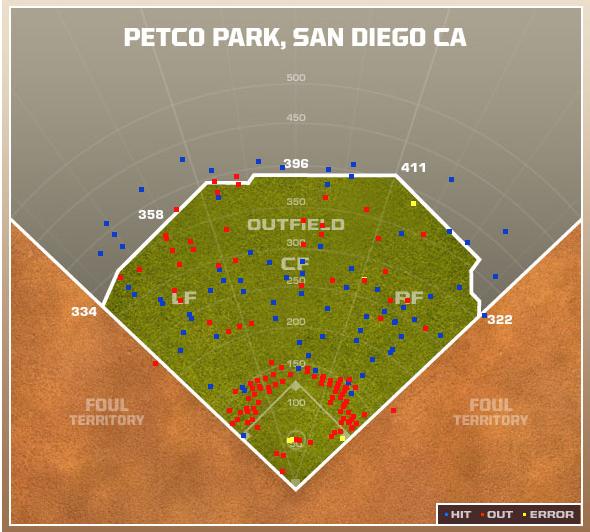
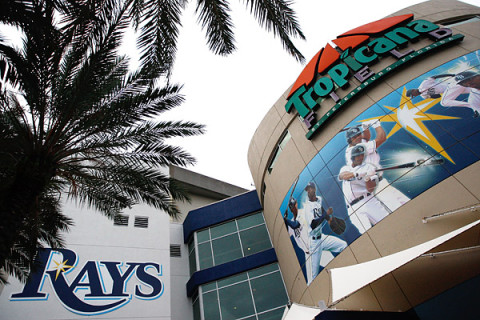
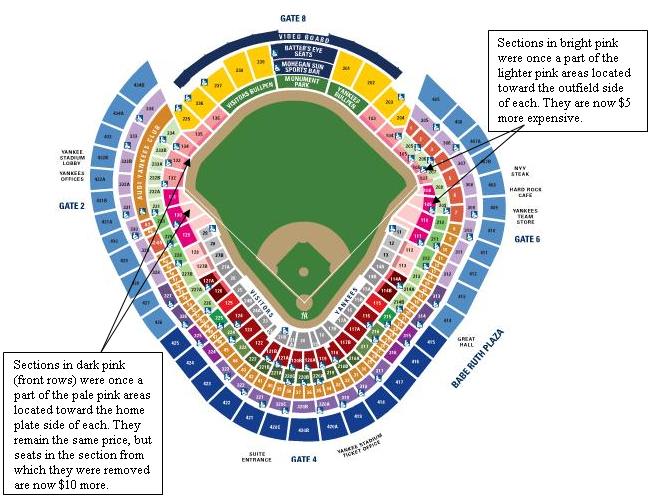
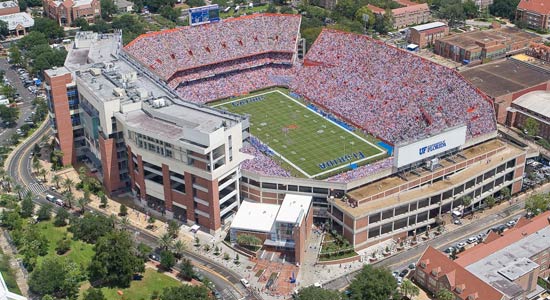
One thought on “Major League Baseball Stadiums and Their Dimensions”